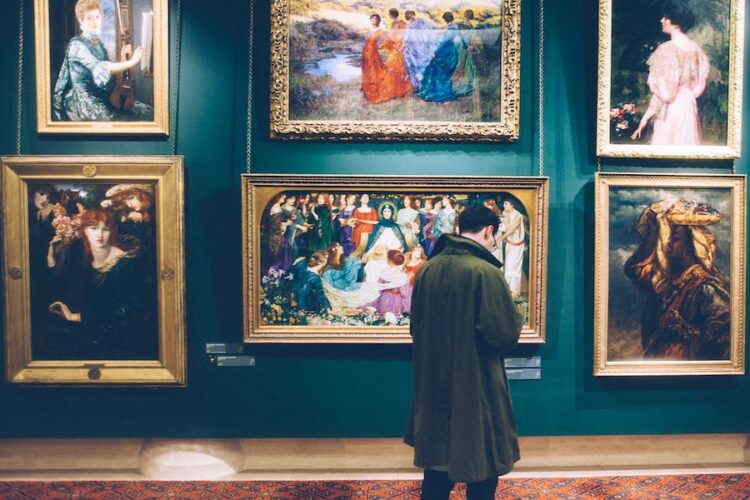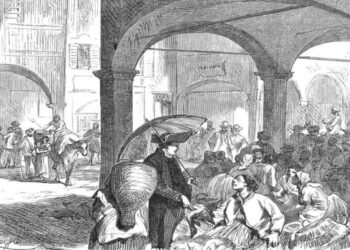Post-Impressionism, a diverse art movement that emerged in Europe towards the end of the 19th century, marked a significant departure from the naturalistic depiction of light and color in Impressionism. This movement was not defined by a single aesthetic but rather characterized by its diverse approaches to art, which varied from artist to artist. It was a period of exploration and experimentation, where artists sought to bring a greater sense of emotion, structure, and symbolism into their work.
The Post-Impressionist movement included several prominent painters who each contributed uniquely to the art world. Vincent van Gogh, Paul Cézanne, Paul Gauguin, and Georges Seurat were among the most influential figures. Their works are widely celebrated for their innovative use of color, composition, and brushwork.
Vincent van Gogh, famous for his vivid colors and emotional intensity, brought a new depth to art with paintings like “Starry Night” and “Sunflowers.” His expressive brushstrokes and use of color conveyed deep emotional resonance. Paul Cézanne, known as the father of modern art, was pivotal in the transition from 19th-century art to a new and radically different world of art in the 20th century. His works, such as “Mont Sainte-Victoire” and “The Bathers,” demonstrated a mastery of design, color, tone, and composition.
Paul Gauguin, another key figure, moved away from Impressionism and naturalism towards a more symbolic and abstract style. His use of color, as seen in works like “Where Do We Come From? What Are We? Where Are We Going?” was particularly influential. Georges Seurat, known for inventing Pointillism, used tiny dots of color to create images. His most famous work, “A Sunday Afternoon on the Island of La Grande Jatte,” is a prime example of this technique.
Amidst these iconic artists, Jules Grun, a lesser-known yet significant Post-Impressionist painter, made a notable impact with his distinct style. Grun’s works, characterized by their vibrant colors and dynamic compositions, captured the essence of French society during the Belle Époque. His paintings often depicted scenes of social gatherings, highlighting the leisure and luxury of Parisian life.
One of Grun’s most acclaimed works, “The Dinner Party,” showcases his exceptional talent in portraying the elegance and vibrancy of Parisian society. The painting is a splendid example of Post-Impressionist art, with its rich colors, intricate details, and a lively depiction of a high-society gathering. In this piece, Grun masterfully blends elements of realism with a more whimsical, stylized approach. The characters in the painting are depicted with a sense of individuality and character, making the scene feel alive and engaging.
The allure of “the dinner party art reproduction” lies in its ability to transport viewers back in time to the glamorous soirées of the French elite. The painting’s composition, with its array of characters engaged in conversation and enjoyment, offers a glimpse into the social dynamics of the era. Grun’s use of light and shadow, combined with his bold color choices, adds depth and dimension to the scene, making it a captivating visual experience.
Jules Grun’s contribution to Post-Impressionism may not be as widely recognized as that of Van Gogh or Cézanne, but his work offers a unique window into the social fabric of late 19th-century France. His paintings are more than just visual delights; they are historical documents that capture the spirit of an era.
Continuing the exploration of Post-Impressionism, we delve into the works of other influential painters who, like Jules Grun, contributed significantly to the movement. These artists, though perhaps not as widely recognized, played crucial roles in the development and evolution of Post-Impressionist art.
Henri Rousseau, often referred to as Le Douanier Rousseau, was a self-taught painter whose work exhibited a naïve or primitive style, distinct from traditional academic art. His paintings, such as “The Sleeping Gypsy” and “The Dream,” are renowned for their dream-like quality and vivid, imaginative landscapes. Rousseau’s work was initially mocked by critics, but he was later celebrated by avant-garde artists for his unique perspective and expressive, symbolic use of imagery.
Another notable artist is Emile Bernard. A close associate of Paul Gauguin, Bernard was instrumental in developing the Cloisonnist style, characterized by bold outlines and flat areas of color. His work, including pieces like “Breton Women in the Meadow,” had a significant impact on the Symbolist movement. Bernard’s approach to art, focusing on emotional and symbolic representation rather than realistic depiction, was a fundamental shift that influenced many of his contemporaries.
Édouard Vuillard, a member of the Nabis group, was known for his intimate, interior scenes. His works often depicted the private, everyday life of Parisians, filled with rich patterns and muted colors. Vuillard’s paintings, such as “The Mother and Sister of the Artist,” showcase his ability to blend figures and backgrounds into harmonious compositions, creating a sense of depth and emotional resonance.
Finally, Maurice Denis, another member of the Nabis, was known for his theories on using color and form to express emotion. His statement, “Remember that a painting—before being a warhorse, a nude woman, or some anecdote—is essentially a flat surface covered with colors assembled in a certain order,” underscores the Post-Impressionist focus on the abstract qualities of painting. Denis’ works, like “April” and “The Muses,” are celebrated for their vibrant colors and symbolic content, contributing significantly to both Post-Impressionism and Symbolism.
Each of these artists brought their unique vision and style to the Post-Impressionist movement. Their collective contributions pushed the boundaries of traditional art and paved the way for the modernist movements of the 20th century. The diversity and innovation of Post-Impressionism highlight the richness and complexity of this pivotal era in art history, demonstrating how each artist’s individual approach contributed to the broader narrative of artistic evolution.
In conclusion, the Post-Impressionist movement, with its array of pioneering artists, marked a significant period in the history of European art. From Van Gogh’s emotive landscapes to Grun’s vibrant social scenes, this era brought about a transformation in the way art was perceived and created. It set the stage for the modern movements that followed, leaving an indelible mark on the world of art. Post-Impressionism was not just about breaking away from traditional techniques; it was about artists finding their unique voice and expressing it through their art, changing the course of art history forever.







